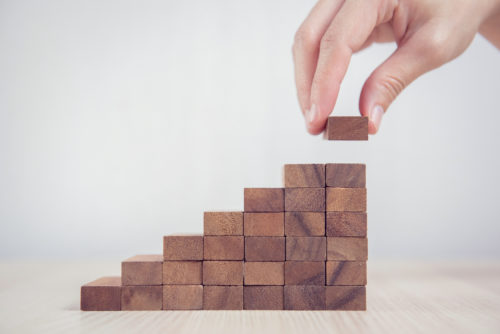Congratulations! You have successfully formed your nonprofit organization and have received your 501c3 tax exemption. This is when your organization gets to start operating and spreading its mission to as many individuals as possible. However, it may be in your organization’s best interest to take some time to plan for the future prior to fully jumping into operations. Taking a few weeks to plan for the nonprofit’s future will ensure that your organization will meet its objectives in the most efficient and effective manner possible.
You may be wondering how to best develop a strategic plan for your nonprofit organization. A strategic plan is critical to your organization’s success. It is often considered a road map for how your organization will meet its goals and assess the progress that you have made. It is essential that all of your representatives are involved in the entire process of creating your strategic plan to ensure that everyone is like-minded and is in agreement on the goals that are in place.
The Components Of A Strategic Plan
Some vital components of how to best develop a strategic plan for your nonprofit organization include creating your core values and mission. This is the area of the strategic plan for your board of directors to determine and put in writing what your organization believes and how it will positively impact its targeted demographic. This will ensure that all of your activities are in line with your values and in the interest of furthering your specific mission. Take the time to determine how your organization will uniquely operate compared to other nonprofit organizations that are serving similar populations. How will your organization meet the needs in a way that is currently being unmet? How are your services providing support to the underserved in a more efficient manner than what is already available to them? The idea is to provide direction to all of your programming activities in a clear and concise manner to all that are involved within your organization
The Who’s and What’s
One of the most important steps in figuring out how to develop a strategic plan for a nonprofit organization is assessing your environment. This is the section of the plan that provides an overview of your community, your targeted demographic, and their needs.
Your team of directors and strategic plan writers will need to spend some time researching the environment that you are serving and detail a written explanation of your findings. Some of the questions to be addressed may include, but are not limited to the following:
- Who is your target demographic?
- Who are the current organizations that you can partner with?
- What organizations are providing similar services?
- What is the current state of our donors?
- Who are our donors?
- What trends are occurring within our field?
- What are the threats affecting our programs?
A huge aspect of assessing your environment is looking internally into your organization. Questions to ask yourselves include:
- What are your organization’s strengths?
- What have you accomplished and who do you have involved within your team?
- What are your weaknesses?
- What are the roadblocks that are preventing you from future success?
When your organization has a clear understanding of its mission, the neighborhoods it is serving, and the current abilities of its mission, it can begin to formulate a step by step plan for success. Being truthful about your current abilities will allow your directors to make improvements to the organization’s structure so it can meet its goals in a realistic timeframe.
Setting Goals and Objectives
The next step, and perhaps most important when considering how to develop a strategic plan for a nonprofit organization is to establish a detailed action plan for the organization. This is where your board of directors will set short term goals (within the next fiscal year), mid-range goals (1 to 3 years) and long term goals (five years or farther out). These goals should have assigned deadlines and tasks should be assigned to directors and volunteers for personal responsibility. Within your goals, make sure to set objectives for all aspects of your organization. This not only includes program goals, but also setting concise objectives for fundraising and administrative responsibilities. Paying attention to funding sources and administrative tasks will ensure that your program goals can be met.
The last section to prepare is the evaluation component. This is the opportunity to determine whether your activities are reaching the desired results you have set or if you need to make modifications to reach the goals that you have established. Your board members should be meeting regularly to determine if assigned tasks are being completed and how you can improve all activities in the future.
It is important to consult with your strategic plan throughout the month and at your board meetings. If you spend the time and resources to complete the plan but do not follow through, it is not going to assist your nonprofit in being successful. Continue to refer back to the plan and make adjustments as your organization grows.
If you are ready to get started with your strategic plan for your nonprofit organization, contact BryteBridge at 877-857-9002 today.





